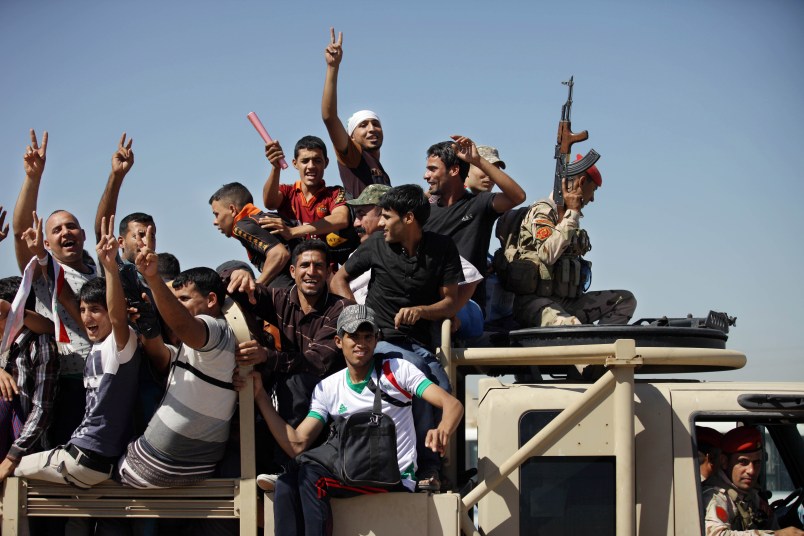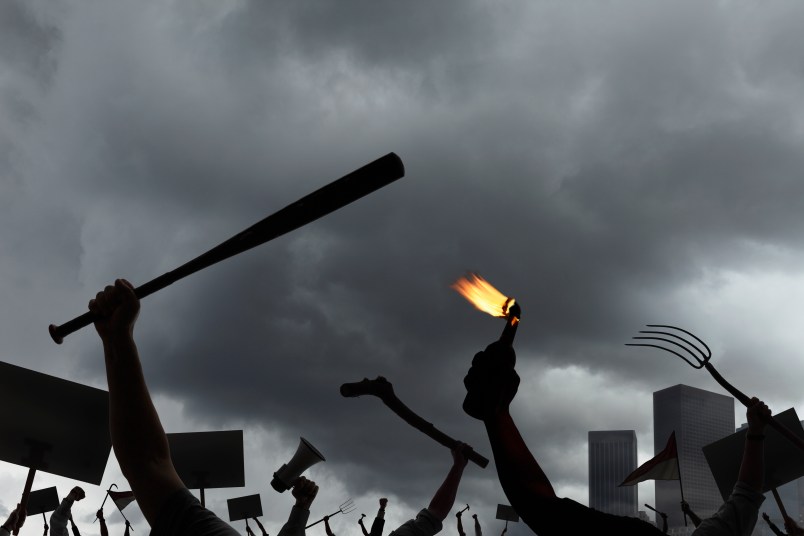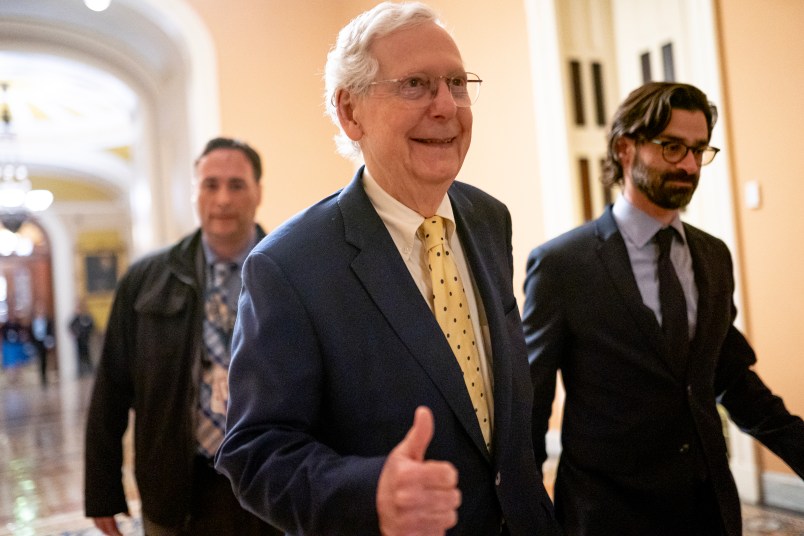Recently at the United Nations, President Obama vowed to dismantle ISIL’s “network of death.” As the United States returns to a war footing in Iraq and launches airstrikes in Syria against the Sunni militant group that calls itself the “Islamic State”—better known in this country as the Islamic State in Iraq and al-Shâm (ISIL)—many seem confused about its strategic objectives and its relationship with the transnational jihadist group, Al Qaeda.
At first glance, it would be easy to draw no distinction between the groups. After 13 years of war, images of men with covered faces waving black flags and conducting brutal acts of terrorism start to run together. But make no mistake: ISIL is not Al Qaeda; it is a completely different organization. Why is it important to make this distinction? Sun Tzu, the ancient Chinese strategist said it best, “know your enemy and know yourself and you can fight a hundred battles without disaster.” There are significant differences between ISIL and Al Qaeda, and it is in these differences where a strategy must be found to mitigate the threats they pose.
I was a counter-terrorism analyst with the Defense Intelligence Agency beginning before the attacks of 9/11. In 2004, following my first of two combat tours in Iraq, I accepted an assignment to the nascent National Counter-Terrorism Center (NCTC) as the lead analyst for the ‘Al Qaeda in Iraq’ team. The group we now call ISIL was a rebranding of Al Qaeda in Iraq, originally known as Jama’at al-Tawhid w’al-Jihad (JTWJ) or the “Party of Monotheism and Jihad,” which was founded in 1999 by Abu Musab al-Zarqawi, a Jordanian would-be mujahedeen with a criminal past.
Zarqawi met Usama bin Laden when the former came to Afghanistan in 1999 to establish his Islamist group and a terrorist training camp, but the two did not hit it off. Bin Laden and his cadre of leaders had an upper middle class to wealthy background and most had a university education. This was in stark contrast to Zarqawi and his poorer, less educated followers. Beyond the socioeconomic differences, there were theological ones; Zarqawi and the JTWJ were Kharijites, an extremely violent and strict sect within the larger takfiri movement in Islam distinguished by a willingness to deign other Muslims to be unbelievers—in effect apostates worthy of death.
This peculiar brand of religious zeal created an important operational rift. Bin Laden and Al Qaeda, as militant Salafists, also regarded minority-sect Muslims like Shiites as heretics. Interestingly, however, they believed that targeting fellow Muslims (theologically astray though they might be) for slaughter would backfire on Al Qaeda and erode popular support for the jihad to push American and Western influence from Islamic lands. Early on, these fundamental differences in class and political agenda created profound distrust and friction between the two rival leaders.
Zarqawi had established a training camp in Herat, clear across Afghanistan from bin Laden’s base, and there he stayed until the fall of the Taliban forced him to escape Afghanistan. He made his way to Iraq, where he once again established a base of operation for the JTWJ. He operated quietly in Iraq, largely unnoticed, until the Bush administration claimed that Zarqawi’s presence in Iraq was evidence that Saddam Hussein was in cahoots with Al Qaeda and therefore partly responsible for the attacks of September 11th, 2001. We know now that none of these allegations or assumptions was true; Zarqawi was a free agent and a leader of his own terrorist organization. But the first time most of the world ever heard the name Zarqawi was when then Secretary of State Colin Powell made the case for war in Iraq at the United Nations.
Zarqawi quickly created a cult of personality around himself as he put into action his brutal and extreme Kharwarij takfiri agenda. He believed that political and religious authority is derived from command on the battlefield, not from a place of hiding far away. This only created more tensions between him and bin Laden. Despite rhetoric similar to bin Laden’s, Zarqawi had quite a different agenda and his targets led to a serious rift between the two terrorist leaders. Zarqawi directed his bellicosity at fellow Muslims—Iraq’s Shiite populace, in particular.
By 2004, Zarqawi had eclipsed bin Laden as the preeminent terrorist leader in the world. His brutal and relentless campaign of suicide bombings and beheadings across Iraq dominated world media attention. Bin Laden, hiding in the caves of Pakistan, sought to bring Zarqawi into the wider network of Al Qaeda despite serious misgivings about JTWJ’s tactics. There were several communiqués from bin Laden urging Zarqawi to cease and desist from his Kharwarij agenda, but Zarqawi persisted.
Finally, in October 2004, Zarqawi apparently recognized the benefits that the Al Qaeda brand could bring. He decided to fast-forward the negotiation process by publically stating that bin Laden had endorsed his tactics—which of course he had not—and that Zarqawi had sworn an oath of allegiance called baya to bin Laden. JTWJ changed their name to Tanzim Qaidat al-Jihad fi Bilad al-Rafidayn, translated to “Organization of Jihad’s Base in Mesopotamia” but more commonly referred to as Al Qaeda in Iraq (AQI). This completed a marriage of convenience, but it also sowed the seeds that would trouble the uneasy alliance and ultimately bring the two groups into an open war with each other for supremacy of the global jihadist movement.
As an associated force of Al Qaeda, Zarqawi’s AQI controlled resources and the flow of foreign fighters, which inculcated a strong sense of loyalty from those who came into the organization and gave him great access to the younger generation of the jihadist movement. One of the key factors distinguishing ISIL from Al Qaeda today relates to this generational disparity. Al Qaeda is largely comprised of men who came of age and fought with the mujahedeen in the 1980s and the 1990s in Afghanistan. AQI (and now ISIL) draws from a younger pool of fighters who cut their jihadist teeth in Iraq and Syria.
This generational divide is further evidenced in how the two groups recruit and communicate. Al Qaeda relies on madrassas and audio and videotaped speeches and sermons by bin Laden and his successor, the Egyptian jihadist Dr. Ayman al-Zawahiri. By contrast, ISIL has a sophisticated social media campaign with online jihadist magazines, slick videos of beheadings and mass executions, and triumphant images of ISIL forces in flag-draped captured armored vehicles on parade in cities under their control. They have a near-real time interface with supporters and would-be recruits around the world.
The ideological differences that characterized the relationship between AQI and Al Qaeda played out on the Iraq battlefield. Zarqawi continued to purge Islam from what he considered heretical sects and non-Muslim Arabs in Iraq. Al Qaeda leadership, by contrast, still believed that Zarqawi should instead focus his efforts on attacks designed to rid the region of “apostate” institutions and governments propped up by Western power and influence. Essentially, this amounted to a difference between a more strategic versus doctrinaire viewpoint as well as differing positions on the role of the organization in institution-building and governance.
Frustrations over Zarqawi’s prosecution of the jihad led to stern warnings from the then deputy, now leader of Al Qaeda al-Zawahiri. Al-Zawahiri advised Zarqawi to tone down the violence and over-the-top enforcement of a very strict interpretation of sharia, which he argued were alienating Sunnis and hurting the objectives of the global jihadist movement. He urged Zarqawi to remember “that we are in a battle, and that more than half of this battle is taking place in the battlefield of the media.” Zarqawi ignored the advice until the day he was killed in an air strike by the U.S. Air Force on June 7, 2006.
In October of 2006, Zarqawi’s successor, Abu Omar al-Baghdadi, issued a statement that AQI was now the Islamic State of Iraq (ISI). By November, key leaders in ISI began to swear baya to al-Baghdadi. This is a significant development in the evolution of the relationship between Al Qaeda and the ISI. Only an individual may swear baya or a pledge of allegiance to a leader; an organization does not pledge baya to another organization. This means that Zarqawi’s death invalidated any sworn allegiance to bin Laden and by extension, Al Qaeda. Interestingly, unlike leaders of other Al Qaeda associated forces, ISI’s emir, Abu Bakr al-Baghdadi, who ascended to the position after Abu Omar al-Baghdadi was killed in 2010, also never publically swore an oath of baya to Zawahiri.
In the summer of 2011, al-Baghdadi dispatched operatives to Syria to establish a branch in that war-ravaged country. In a telling sign of his growing ambitions, al-Baghdadi rebranded ISI as the Islamic State in Iraq and al-Shâm (ISIS or ISIL), an Arabic term which includes Syria, Israel, Lebanon, parts of Turkey, and Jordan—the birthplace of their founder, and soon found itself in a dispute with Al Qaeda’s official surrogate in Syria, Jabhat al-Nusrah (JN). ISIL claimed that JN had merged with ISIL, but the ‘hostile takeover’ was flatly rejected by the leaders of both JN and Al Qaeda.
At first, it appeared that the JN-ISIL feud would be settled behind the scenes. Al Qaeda sent emissaries to mediate between the two groups in Syria. But one of these emissaries, Abu Khalid al-Suri, was killed by an ISIL car bomb. This act of aggression is seen by many to be the final straw that led to the dissolution of the Al Qaeda-ISIL alliance. On February 2, 2014, Al Qaeda’s general command released the following statement:
ISIS is not a branch of the Qaidat al-Jihad [Al Qaeda’s official name] group, we have no organizational relationship with it, and the group is not responsible for its actions.
A rift decades in the making was finally official, but the break was far from the end for ISIL. Al-Baghdadi, true to the legacy of Zarqawi, was determined to actionalize the jihadist agenda while exacerbating existing cleavages and praying on the extreme weakness of the state in both Syria and Iraq. Now, the question remains: How should the United States combat this unique new threat?
Quigley is a senior fellow for National Security at Human Rights First, and a member of the Defense Council at the Truman National Security Project. He is a naval intelligence officer, has served two combat tours in Iraq, including one with Joint Special Operations Command, and served as lead counterterrorism analyst on al Qaeda in Iraq for the Defense Intelligence Agency at the National Counter-Terrorism Center. His opinions are his own and are not endorsed by the U.S. Navy Reserve or the Department of Defense. Follow him on Twitter @MJQuigley4.
—
Lead photo: Iraqi men flash victory signs as they leave the main recruiting center to join the Iraqi army in Baghdad, Iraq, Tuesday, June 17, 2014, after authorities urged Iraqis to help battle insurgents. Hundreds of young Iraqi men gripped by religious and nationalistic fervor streamed into volunteer centers across Baghdad Saturday, answering a call by the country’s top Shiite cleric to join the fight against Sunni militants advancing in the north. (AP Photo/ Khalid Mohammed)









